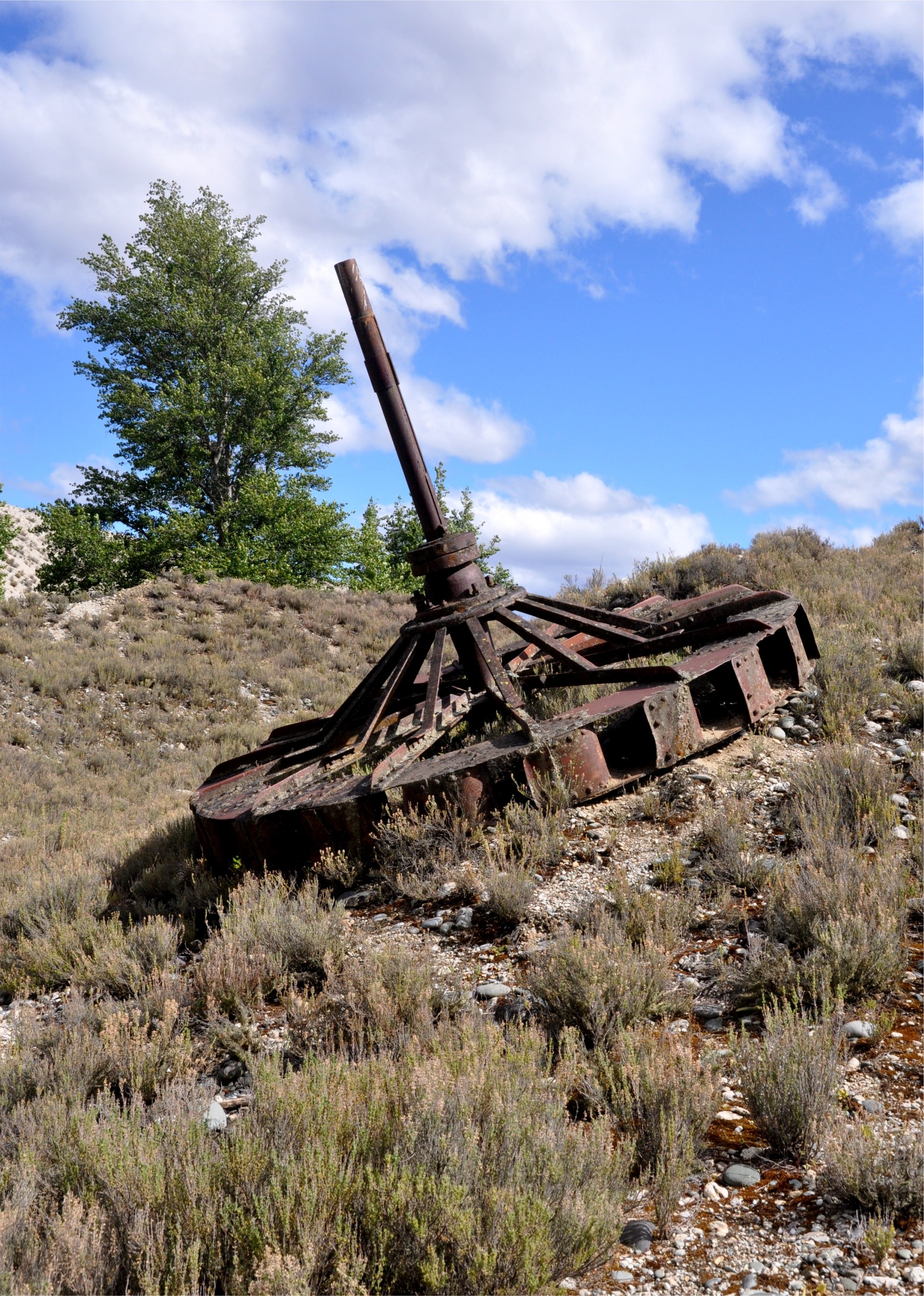Our planned trip to Central Otago in February was somewhat thwarted by a combination of broken bones (mine & my mum’s) and record rainfall in the area just prior to our arrival. With many of the walking tracks we had planned to do along the Clutha River underwater, and with cycling not really an option, we found some other historical sites to visit instead.
First on the list was the Earnscleugh Tailings, a few sentences in our guide book indicated that this was an internationally important site of historic dredge tailings, but we were unable to find much additional information about what to expect (although I subsequently found this really interesting article on NZ Geographic).

After a false start when the main trail head was closed due to the high water, we were able to find a back entrance into the historic reserve and found ourselves walking past abandoned mining equipment towards what appeared to be a giant pile of pebbles. After climbing a small ridge we started to see the entire dredge field spread out before us.

Covering around 170 hectares, the reserve contains 100 years of dredge tailings. After the initial gold rush in the area from 1862-1864, which took advantage of the easy to access alluvial gold, miners switched to dredging operations.

Initially dredges were steam powered, using locally mined coal to help process large quantities of material. At one time more than 150 dredges worked in this area, and the occasional success, such as the 1234 ounces of gold that were recovered by the Lady Molyneux dredge in just a week, fueled development in the area.

As the coal ran out, the dredges were converted to electricity, and the Alexandra Dredge that worked this area continued operation until 1962. Apparently, locals could tell when the dredge hit hard rock as the lights in the nearby town would dim! We spent some time exploring the tailings, the mostly barren rocky ground a stark contrast to the lush vineyards and orchards that surround the reserve.
The scale of the tailings is hard to gauge from the photos, but it continued as far as the eye could see. After walking one of the ridges for a while we returned to the car, surprised at the vast mining remains we had seen.
